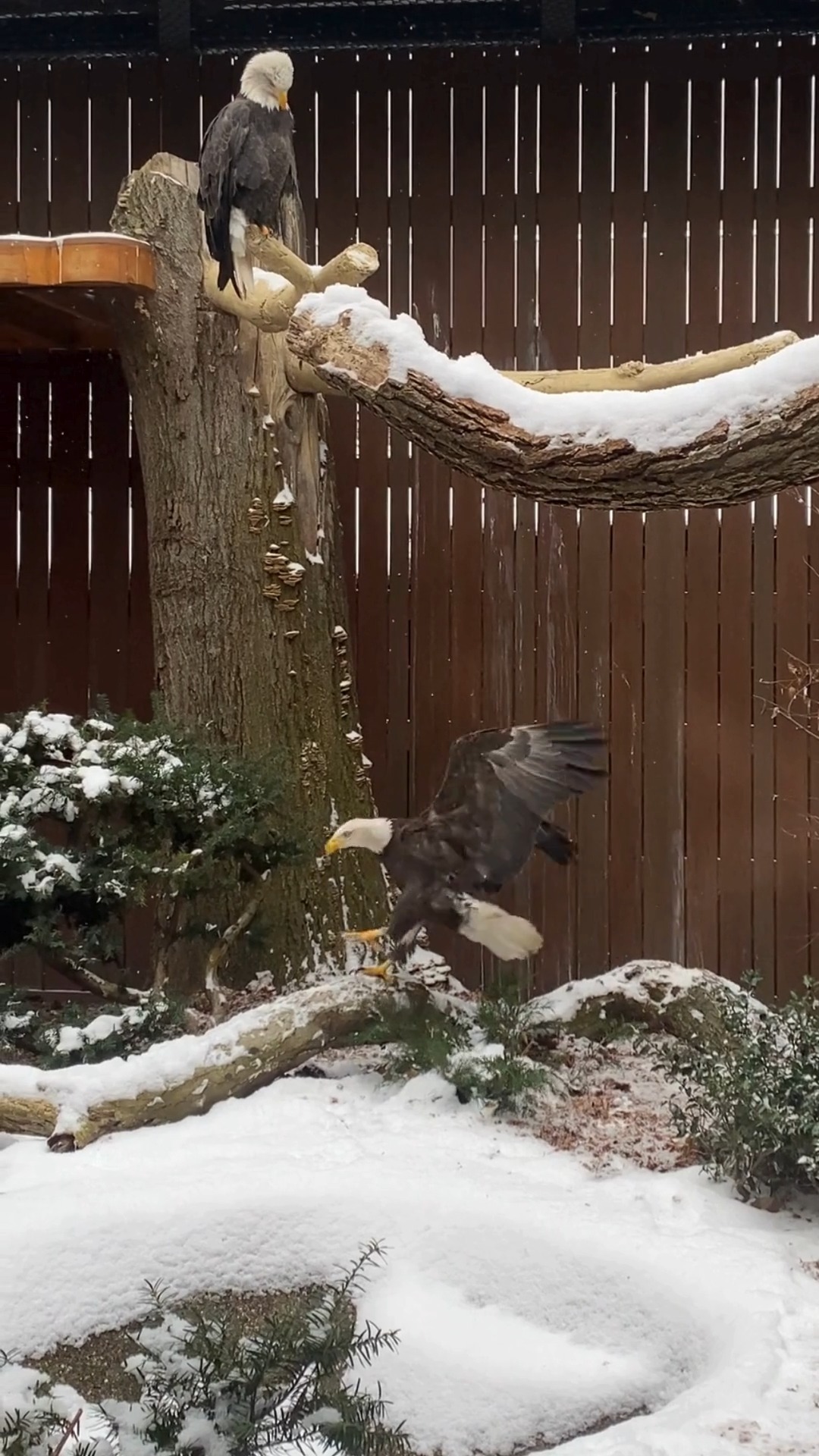- The return of the National Aviary’s Bald Eagles, Indy and Flinn, to a thriving habitat and their significance as the national bird of the United States.
- The Charity Randall Foundation Eagle Hall’s environment designed to support the well-being and natural behaviors of Bald Eagles.
- The National Aviary’s mission and efforts in bird conservation, education, and habitat preservation.
- Insight into the characteristics and ecology of Bald Eagles as apex predators, their status in the wild, and conservation measures.
- The role of the National Aviary in providing a diverse habitat for 150 species of birds to facilitate research and public awareness.
The Bald Eagle, a venerable emblem of American spirit and freedom, has triumphantly returned to its sanctuary at The Charity Randall Foundation Eagle Hall in the National Aviary. This return is not merely a relocation but symbolizes an ongoing commitment to conservation and education. Indy and Flinn, the majestic Bald Eagles, now reside in a habitat refined for their unique behavioral and physiological needs. These birds not only stand as icons of national pride but are recognized officially as the national bird of the United States as of December. This hallmark status elevates their significance and underscores ongoing conservation efforts.
The newly designed habitat offers an enriched environment that mimics the eagles’ natural ecosystem as closely as possible. The Charity Randall Foundation Eagle Hall is equipped with ample soaring space, perching stations, and water features that mimic the riverine and lakeside terrains of their original environments. This setting enables the Bald Eagles to engage in instinctual behaviors such as hunting and social interaction, which are crucial for their mental and physical health. The development of such a habitat requires a profound understanding of avian ecology, engineering, and psychological aspects, all aimed at promoting welfare and educational engagement.
Within the broader scope of the National Aviary’s mission lies a commitment to conserving avian biodiversity through education and direct conservation actions. The Aviary serves as a microcosm for avian diversity, supporting over 500 birds across 150 species. This organization actively participates in breeding programs, facilitates scientific research, and launches outreach initiatives that elevate public understanding of avian ecology and environmental stewardship. Birds like Indy and Flinn are ambassadors for this mission, inspiring guests to appreciate and support conservation efforts both locally and globally.
Bald Eagles, as apex predators, play a critical role in their ecosystems. Their presence indicates a healthy environment, as they rely heavily on aquatic food sources like fish. This dependence makes them sensitive to changes in their habitat, pollution, and the availability of prey. Historically, Bald Eagles faced threats from pesticide exposure, lead, and habitat destruction, which severely impacted their populations. Conservation efforts, notably the banning of DDT in the United States and protective legislation like the Bald and Golden Eagle Protection Act, have aided their recovery. The species is now classified as Least Concern by the IUCN, illustrating the impact of targeted conservation strategies.
The National Aviary’s operational philosophy is built on delivering an immersive experience that enhances public education and fosters conservation awareness. Through carefully curated environments, the Aviary demonstrates how humans can coexist with nature harmoniously. Each habitat within the Aviary is strategically curated based on the individual needs and behaviors of its avian residents, encouraging naturalistic interactions and promoting species-specific educational narratives. Whether observing an eagle’s majestic flight or learning about the diverse morphologies and adaptations of other resident species, visitors leave the Aviary enriched with knowledge and a heightened appreciation for avian life.
The Aviary acts as a vital educational hub, offering programs and exhibits that bridge the gap between public understanding and scientific knowledge. Through these initiatives, visitors learn not only about birds like the Bald Eagles but also about the broader ecological contexts in which these birds exist. This education is crucial for engendering informed support for conservation policies and personal practices that protect avian habitats.
In championing the cause of bird conservation, the National Aviary provides vital learning experiences and conservation insights that are instrumental in preserving avian species worldwide. These efforts are a testament to the enduring value of Indy and Flinn’s presence at the Aviary. Through ongoing exhibitions and educational programs, these Bald Eagles continue to inspire present and future generations to engage with and protect the natural world.
*****
Source Description
🗣️THEY’RE BACK…on habitat! The National Aviary’s majestic Bald Eagles have returned to a flourishing habitat in The Charity Randall Foundation Eagle Hall. 🦅
these magnificent birds are now OFFICIALLY the national bird of the United States? While the Bald Eagle has long been a symbol of America, the honor was officially bestowed upon the iconic white-headed, yellow-beaked bird of prey at the end of December!
Say hello to Indy and Flinn during your next visit:
The National Aviary is home to more than 500 birds representing 150 species, some of which live in behind-the-scenes habitats. Depending on individual bird preferences, different species may spend time in various public-facing habitats to enhance our guests’ educational experience.

